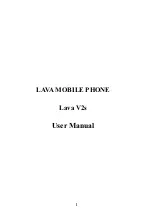
Global SIP Settings
41-001343-02 REV05 – 07.2014
4-74
Real-time Transport Protocol (RTP) Settings
Real-time Transport Protocol (RTP) is used as the bearer path for voice packets sent over the IP network. Information in the
RTP header tells the receiver how to reconstruct the data and describes how the bit streams are packetized (i.e. which
codec is in use). Real-time Transport Control Protocol (RTCP) allows endpoints to monitor packet delivery, detect and com-
pensate for any packet loss in the network. Session Initiation Protocol (SIP) and H.323 both use RTP and RTCP for the media
stream, with User Datagram Protocol (UDP) as the transport layer encapsulation protocol.
You can set the following parameters for RTP on the IP Phones:
RTP Port
RTP is described in RFC1889. The UDP port used for RTP streams is traditionally an even-numbered port, and the RTCP con-
trol is on the next port up. A phone call therefore uses one pair of ports for each media stream.
The RTP port is assigned to the first line on the phone, and is then incremented for each subsequent line available within
the phone to provided each line a unique RTP port for its own use.
On the IP phone, the initial port used as the starting point for RTP/RTCP port allocation can be configured using "
RTP Port
Base
". The default RTP base port on the IP phones is 3000.
24.
Enable the "
XML SIP Notify
" field by checking the check box.
(Disable this field by unchecking the check box. Default is disabled).
Enabling this parameter allows the phone to accept or reject an aastra-xml SIP NOTIFY message.
Note:
To ensure the SIP NOTIFY is coming from a trusted source, it is recommended that you enable the Whitelist feature (
Whitelist Proxy
param-
eter) on the IP phone. If enabled, and the phone receives a SIP NOTIFY from a server that is NOT on the whitelist (i.e. untrusted server), the
phone rejects the message.
For information about setting this feature, see Chapter 5, the section,
.
25.
Click
Save Settings
to save your changes.
Note:
If RFC2833 relay of DTMF tones is configured, it is sent on the same port as the RTP voice packets. The phones support
decoding and playing out DTMF tones sent in SIP INFO requests. The following DTMF tones are supported:
•
Support signals 0-9, #, *
•
Support durations up to 5 seconds
Aastra Web UI Parameters
Configuration File Parameters
RTP Port
sip rtp port
Basic Codecs (G.711 u-Law, G.711 a-Law, G.729)
sip use basic codecs
AMR and AMR-WB (G.722.2) Codecs (Licensed feature for 6735i, 6737i,
6863i, 6865i, 6867i only)
sip amr codec payload format
sip amr codec mode set
sip amr wb codec mode set
Force RFC2833 Out-of-Band DTMF
sip out-of-band dtmf
Customized Codec Preference List
sip customized codec
DTMF Method (global and per-line settings)
sip dtmf method (global and per-line settings)
RTP Encryption (global and per-line settings)
sip srtp mode (global and per-line settings)
Silence Suppression
sip silence suppression
Aastra Web UI
















































